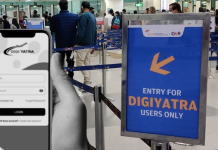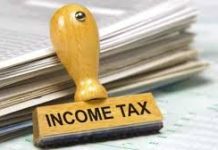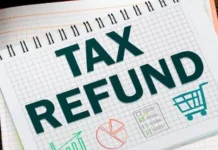If taxes have been paid outside India, then you may also claim foreign tax credit
Homi Mistry
It is that time of the year, when income-tax returns are to be filed. This year the difference being that the tax filing deadline for taxpayers has been extended until November 30, 2020. Since there is more time to file tax returns this year, let us look at how the returns can be filed correctly by avoiding some common errors.
Salary income from outside India
We all are well aware that we get a Form 16 in respect of our salary income and we need to include this income in our tax return. However, what if a taxpayer has worked outside India for a part of the year and his employer was a foreign company? In such a case, the foreign company will not issue any Form 16 but the taxpayer needs to compute income from his foreign tax return / foreign payslips / foreign tax paid certificate and include the same in his India tax return (if he qualifies to be resident and ordinarily resident in India). If taxes have been paid outside India, then he may also claim foreign tax credit, on the basis of the tax return filed in the foreign country, subject to providing necessary documentation.
House property
With effect from financial year 2019-2020, up to two residential house properties can be considered as self-occupied and hence, tax free. However, if a taxpayer owns more than two residential house properties that are not let out, the taxpayer will have to declare the additional house properties as deemed to be let out and offer notional rental income for those properties, to tax.
Capital gains
A taxpayer typically peruses his bank statements to check and ensure that all income he has received during the year has been correctly captured in the tax return. While this is a good practice, it may not reflect income which has not been paid into the bank account but has been reinvested. For instance, the bank account will show the proceeds of mutual fund units redeemed during the year but the switch-outs from one mutual fund and switch-in to another mutual fund will not reflect in the bank statement. A switch-out is also a taxable event and the gain, if any, needs to be duly offered to tax, even though not received in the bank account.
Clubbing of income
It is common practice for parents to invest funds in the name of their minor children or for a working individual to invest funds in the name of his/her spouse. Income from investments made out of a taxpayer’s funds in the name of his spouse or minor children is taxable in his hands. For instance, interest from fixed deposits or capital gains from sale of investments invested by the taxpayer in a minor child’s or spouse’s name, needs to be offered to tax in the tax returns of the taxpayer.
Moreover, any income earned by a minor child should be clubbed in the hands of the parent who earns a higher taxable income, unless the income earned by the minor child can be attributed to his skill, talent or specialised knowledge and experience. An exemption of Rs 1500 is available to the parent, per child, in respect of such clubbed income.
Form 26AS
Form 26AS reflects details of certain income and the corresponding tax deducted at source thereon by payers of such income during a tax year. It also includes details of the advance tax / self-assessment tax paid by the taxpayer for that tax year. When a tax return e-filed by a taxpayer is processed electronically, the details submitted in the return are matched against the corresponding entries of income and taxes in his Form 26AS. If there is a mismatch between the income or tax reported in Form 26AS and the tax return, the tax authorities send a notice to the taxpayer seeking an explanation for the difference.
Let us take an example. Mr and Mrs A are co-owners of a house and based on the share of investment, offer rental income in their respective tax returns in the ratio of 50:50. However, the tenant, while depositing the tax deducted at source from the rental income, has reported the entire tax against Mr A’s PAN only. Accordingly, the entire rent and the corresponding TDS is visible in Mr A’s Form 26AS while there is neither TDS nor rental income in Mrs A’s Form 26AS. In this case, when Mr and Mrs A file their tax returns offering 50 per cent of the rental income each and claiming credit for 50 per cent of the tax deducted by the tenant, this will not match with their Forms 26AS and may lead to a query from the tax authorities.
Failure to e-verify / send signed ITR to CPC
E-filing a tax return entails a two-fold process: uploading the return (i.e. the xml file) on the income-tax portal and e-verifying the tax return thereafter. E-verification can be done by using Aadhaar or net-banking based one-time passwords. Alternatively, the signed ITR-V can be sent to CPC Bengaluru. Failure to e-verify the tax return can lead to it being treated as null and void.
Not offering income to tax can lead to tax, interest and penal consequences. Hence, this extra bit of caution for certain items of income can save a lot of time in addition to interest and penalty.
Source: sea.operanewsapp.com





